Хаас за Монако
Ромен Грожан:
Barcelona delivered Rich Energy Haas F1 Team’s first double-points finish of the season and its eighth since joining Formula One in 2016. Scoring points is always good, but how much of a shot in the arm was it for the team to have a strong weekend from beginning to end that yielded some tangible results?
I think it was good. The car felt good from FP1, and that’s important. The first free practice always gives you the first clear idea of how the weekend is going to go. It went really well in Barcelona. We were happy with that, and we could get the tires to work nicely. In the race, the pace was pretty good. I think at one point we were faster than a Red Bull, which is very good for us. Obviously, the safety car didn’t help us, but the car felt really good.
You were able to sample all of the upgrades for the Haas VF-19 from the opening practice of the Spanish Grand Prix on Friday right through to the checkered flag on Sunday. How much of a difference did these upgrades make, and how impactful were they in achieving your first points-paying performance of the season?
The upgrades worked great because our pace was very close to that of Red Bull. That’s amazing. I still believe without the upgrade we would have finished seventh, but maybe not so close to the top teams because our main issue since the start of the year has been getting the tires to work, and we did that in Barcelona. That’s where the performance came from.
Getting the tires into the proper operating window and then keeping those tires in that operating window had been the team’s challenge prior to the Spanish Grand Prix, but that didn’t seem to be a problem in Barcelona. What made the difference?
I guess the difference was made by the track layout and the energy going into the tires with the high-speed corners, and the higher track temperatures really helped us. We know where we need to get. We know our windows are correct, but now it’s a question of how do we get them into the window at every race.
Can what you learned about the Haas VF-19 and its relation to its tires carry over to Monaco?
It’s a good question. I think the team’s going to keep working hard in the background and make sure we get the tires into the window in Monaco. If that’s the case, we’re going to be very competitive again.
Rich Energy Haas F1 Team has proven strong in qualifying this year, placing both its cars into the final round of knockout qualifying in all but one race this year. Knowing how important qualifying is at Monaco, is that the team’s best asset to secure another points-paying performance?
Yes, definitely. In Monaco you want to be in the top-10. You want to be as high as you can on the grid to be able to get a good result. Monaco qualifying is going to be important. Hopefully, tires are not holding us back, as that’s something that can clearly hurt us a lot. But when it works, it really works.
Кевин Магнусен: Barcelona delivered Rich Energy Haas F1 Team’s first double-points finish of the season and its eighth since joining Formula One in 2016. Scoring points is always good, but how much of a shot in the arm was it for the team to have a strong weekend from beginning to end that yielded some tangible results?
It was great to have a strong weekend from start to finish. I was very happy for the team to score points with both cars.
You had to begin the Spanish Grand Prix race weekend running the old specification of the Haas VF-19 as the team worked to diagnose in real time the benefits of the upgrades it brought to Barcelona and put on Grosjean’s car. How impactful was your work with the old specification in getting a better understanding as to how the upgrades would make both cars better?
I think it was a good plan to split the cars, running with the old and the new in order to compare directly. We got some good data. So, hopefully we’re able to make some quick progress because of that.
Getting the tires into the proper operating window and then keeping those tires in that operating window had been the team’s challenge prior to the Spanish Grand Prix, but that didn’t seem to be a problem in Barcelona. What made the difference?
Temperatures on the track surface and the layout made the difference. It’s still an issue we’re investigating and making progress on.
Can what you learned about the Haas VF-19 and its relation to its tires carry over to Monaco?
It’s a very different track. We’ll see about the temperatures there, but I think we might struggle to use what we had in Barcelona in Monaco, which is always the case. We’ll see how we go.
Rich Energy Haas F1 Team has proven strong in qualifying this year, placing both its cars into the final round of knockout qualifying in all but one race this year. Knowing how important qualifying is at Monaco, is that the team’s best asset to secure another points-paying performance?
Hopefully, we can be strong in Monaco qualifying. The race is always a different story there as it’s so hard to overtake. Obviously, we still want to be fast in the race. We’re going to work hard to have good pace and keep the tires in their windows.
Гюнтер Щайнер: Barcelona delivered Rich Energy Haas F1 Team’s first double-points finish of the season and its eighth since joining Formula One in 2016. Scoring points is always good, but how much of a shot in the arm was it for the team to have a strong weekend from beginning to end that yielded some tangible results?
Obviously, having a result like this boosts the confidence of the whole team, because the previous three races were not very good at all. We didn’t score any points. A result like Barcelona, where we had a very good weekend – it’s a big boost – and it gives us confidence with the potential of the car going forward.
You brought numerous upgrades to Barcelona, but it was Grosjean who began the weekend with the upgrades on his car while Magnussen ran with the previous specifications. Walk us through this process and how it hastened the team’s learnings regarding the Haas VF-19.
We had the possibility to do the back-to-back with the two cars, between what we now call the old spec and the new spec. It’s always good to know what you’re doing and if it works, so if you can do a back-to-back it’s always the best way to do it. You can prove things. Data’s data obviously, and the wind tunnel’s the wind tunnel, but the car is the car. We utilized this to our advantage and tested both specs of car. We came out clearly that the upgrade kit is better, so that’s why we then put it on Kevin’s car for Saturday and Sunday.
Getting the tires into the proper operating window and then keeping those tires in that operating window had been the team’s challenge prior to the Spanish Grand Prix, but that didn’t seem to be a problem in Barcelona. What made the difference?
The biggest difference is the layout of the racetrack. The Barcelona track allows quite a lot of energy into the tires, and therefore we could heat them up, which didn’t happen in the other three races. We were pretty confident coming to Barcelona that it would work but, again, we needed to prove it, and we know now that at circuits like this it works. Hopefully going forward, by using the softer type of tires over the next few races, that will help as well, and we can get the heat into the tire. Monte Carlo and Canada will not be easy for us, but we will try our best to get the tires to work and get a good result.
Can what you learned about the Haas VF-19 and its relation to its tires carry over to Monaco?
I think the biggest difference for Monte Carlo will be the choice of the tire. We’re running the C4 and C5s from Pirelli – the softest types of tires we can use. With those tires, we hope we can get the temperature into them and have a good result. We have to try, and we’ll only find out on Thursday what is happening.
Rich Energy Haas F1 Team has proven strong in qualifying this year, placing both its cars into the final round of knockout qualifying in all but one race this year. Knowing how important qualifying is at Monaco, is that the team’s best asset to secure another points-paying performance?
In Monaco, you always have to qualify well to get into the points. In qualifying, we’re normally very good. We’ve been in the top-10 with both cars in four races out of five. Hopefully, we can do the same in Monte Carlo. If we get in at the front of the field in qualifying, normally in the race you can keep the other people behind – even if the race pace isn’t as good. Qualifying is crucial, though.


















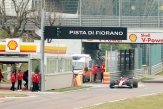
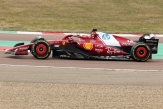
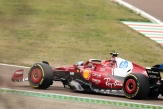
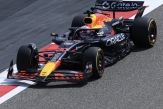
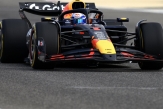
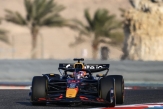

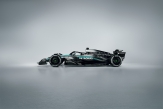
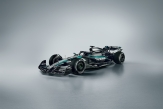
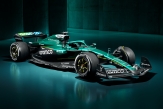
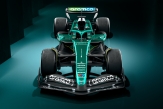
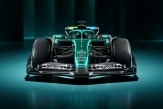
.jpg)
.jpg)
.jpg)

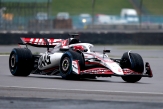

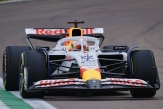
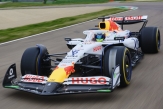
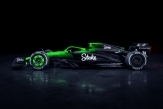
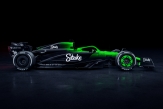

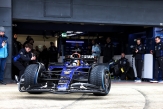
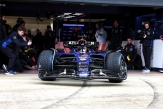
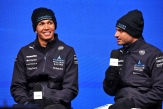

02/12/2025 от Огнян Тенчев (drJeckyll), няма коментари